TheRaven has summarized occupation-by-industry data into broadly defined industry groups. Groupings attempt to vertically align industries according to basic economic themes. To be clear, the data is authoritative and covers the entire U.S. workforce, except for farming; domestic help and freelancers. Bearing in mind that industries overlap and that no grouping system is perfect, this post uses summarized BLS data to throw light on a few aspects of the US job market not found in typical reportage.
Click any chart to see it full-size.
Reported: bankruptcies of GM and Chrysler, loss of Big-3 jobs.
Missed: the Big-3 workforce is a very small piece of total auto industry employment. Due to Big-3 outsourcing and inroads by Toyota, Honda, Subaru, Hyundai, et al, component manufacturers employ the bulk of the auto manufacturing workforce and they took the brunt of layoffs. Big-3 employees got the ink but lesser-known, lower-paid people felt the pain.
Confused by the chart?
Left side - employment by industry, by year.
Center - color codes (chart legend)
Important: color code sequence matches left & right, reading from top to bottom.
Right side - percentage distribution of employment, by industry, by year.
Reported: individual retailers struggled during the recession, retail layoffs, Las Vegas implosion.
Missed:
1) Florists have fared worse than the gambling industry, with a (25%) employment drop vs. (23%) in gambling.
2) "General merchandise stores" employment is up 29% over 2005, with 2009 gaining 3%.
Reported: oil prices, gas prices, "pain at the pump", "drill baby, drill", coal mine disasters, West Virginia's eternal dependence on coal, rising atmospheric carbon, climate change, oil spills.
Missed: employment in core industries of the carbon-based economy has been slowly falling, even as oil & gas exploration ramped up, and these industries account for less than 2% of the U.S. workforce.
Reported: "bailouts", tea bagger rage at the Federal government, flourishing conspiracy theories and extremist groups, "bloated Federal bureaucracy", slow dispersal of stimulus money.
Missed:
1) State & local governments employ four-times more people than the Federal government.
2) 87% of new government jobs created by the 2009 hiring surge were State & local.
3) all government jobs in 2009 accounted for only a slightly larger share of the U.S. workforce as compared to 2005.
Reported: anything branded "Apple", every Intel press release, lawsuits, video game releases, all "smart" objects, including the stupid ones.
Missed:
1) U.S. electronic manufacturing in long-term decline.
2) Digital economy jobs are up almost 10% over 2005, even after a 2% dip in 2009.
3) Systems design is flourishing.
Reported: newspaper financial trouble, Leno vs. Conan, Lost, 24.
Missed:
1) Old-media industries are in an across-the-board, long-term decline (it's not just newspapers).
2) Industry group share of U.S. workforce fell from 2.2% to 1.9%.
3) Internet-driven creative destruction is hitting in-force (aided by journalist incompetence).
Reported: organic vs. non-organic, Michael Pollan, franchise restaurant financial trouble, farming efficiencies have reduced farm employment to a tiny fraction of the U.S. workforce.
Missed:
1) Industry employment ratios from 3-4 generations ago have reversed. Where once a vast number of farmers produced food that moved through thinly-staffed distribution, a comparatively tiny farming workforce now plugs into a vast distribution network.
2) Where 3-4 generations ago very few people ate out, America now has a huge, sophisticated set of restaurant industries that have significantly displaced meals at home.
3) Almost one-in-eight U.S. workers is connected to food and this industry grouping shows a 3.8% net gain over 2005 employment, after shedding 177,980 jobs in 2009.
Reported: so-called Obama-care, so-called town-hall meetings, health-care share of GDP, hospitals feeling effects of uninsured population
Missed:
1) Hospitals & outpatient centers account for more than one-third of health care employment.
2) While hospital employment grew 7% between 2005 and 2009, ambulatory/outpatient industries grew a (combined) 18%.
3) Home care had the fastest employment growth, increasing by one-quarter between 2005 and 2009.
Reported: collapsing real estate markets, over-building, death of the suburbs, Case-Schiller, home buyer credits, foreclosures, short sales, home builder financial issues, mass layoffs.
Missed:
1) Similar to the auto industry, collapse of home building rippled through many supplier industries.
2) One-in-eight jobs related to home construction was lost with most of the decline in 2009.
3) This industry group dropped from 8.0% to 6.9% of the U.S. workforce.
Reported: "off-shoring", jobs lost to overseas competition, "no job safe".
Missed:
1) Domestic out-sourcing industries are an immense group, accounting for 1-in-9 U.S. jobs.
2) In 2009, this industry group gave up almost all the 1+ million jobs it gained over 2005-2008.
3) Employment services were crushed, losing 1 million jobs between 2007 and 2009.
****************************************
A subsequent post may look at more winners & losers among individual industries and occupations. This was the introductory, top-level view.
(All analysis by TheRaven)

















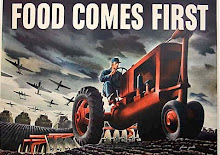
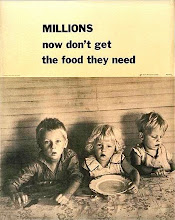



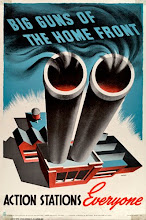
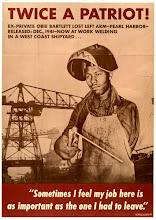





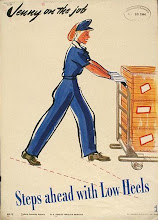
+breed+danger+6x8.jpg)











+5x7.jpg)


No comments:
Post a Comment